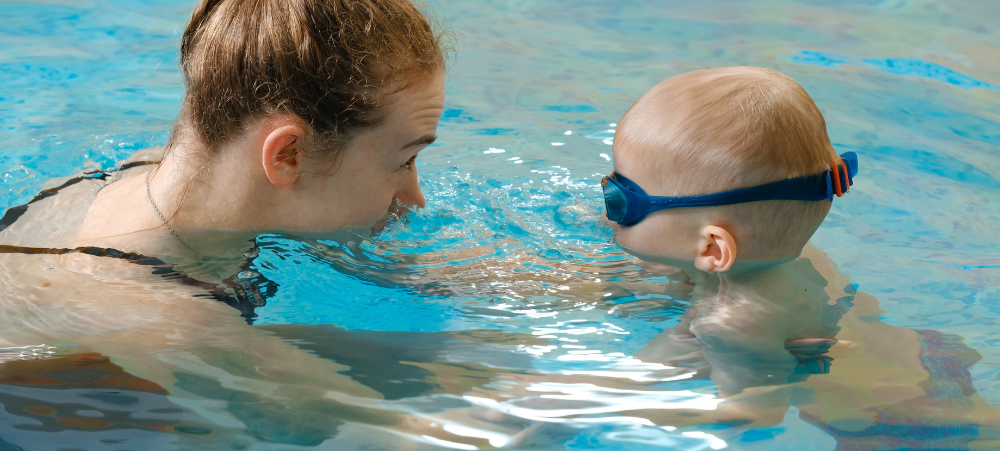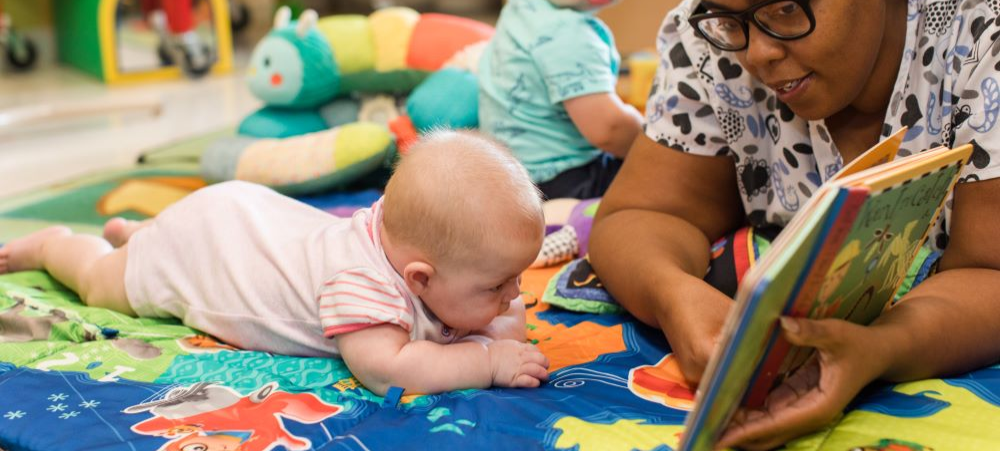I have had the privilege of teaching in larger groups of 5, smaller groups of 2-3, and individual classes. We Learn through play, and fun is key to learning to swim by the time they start Grade 1.
Swimming
Learning to Swim is not about stroke development. Instead, it is when you can swim from one side to the other side of the pool comfortably and effortlessly, breathing and climbing out of the pool.
Children up to 3 or 4 years old do not know and understand that they are in a learning environment; therefore, repetition of songs, actions, and progressions helps them learn more effectively.
I believe the earlier you introduce children to water in a safe environment, the more comfortable and content they will be. Older children have more obstacles to overcome when they start lessons later, e.g., introduction to a large mass of water, orientation, the instructor, the children, the venue, and the building of trust.
What do typical swimming lessons look like for each age group?
I will begin my journey with the youngest age group; I call them my ‘water babies,’ they are ages one year – eighteen months.
They love the water. A parent must accompany their baby in the water and we teach them how to hold and manage the baby. We learn songs and cues; it takes about 4-5 lessons for everyone to settle down in the water. Once babies can crawl, walk and climb on land, they can start learning this in water, and hence why our very first lesson we learn is entry into shallow water before proceeding into the deep end.
If you are fortunate to have a shallow step in your pool, you can make the lesson fun by encouraging your child to crawl like a crocodile, hop like a bunny, and climb or hold onto objects or obstacles.
Once we enter the water, we can walk around with the baby on the hip & allow their hands to feel and move through the water. Since they are so small and all their body parts work together simultaneously, parents do most of the actions by manipulating their arms and legs, and as baby grows, they can attempt the activities on their own. Examples of manipulation will be moving their arms around and digging in the water, splashing their feet, and holding on.
As they become confident and master a skill, we can progress on each skill. An example of a skill would be back floating. It starts with a parent walking backward in the water with the baby’s head on the parents’ shoulder while the baby is facing upwards. Mom will hold the baby’s hand, and the other hand will drift freely. Eventually, we move the baby off the shoulder and against the parent’s chest with one finger lifting the chin up while the other hand supports the baby’s head. The parents can sing and count to promote confidence and excitement. We then would progress to catch and release the hand away from under the head, catch and support.
We should be teaching babies at this age to close their mouths and hum. Humming prevents water from entering through the nose. Humming on its own takes a lot of practice, and cues are vitally important; E.g., 1,2,3 hum and submerge. Please note we only immerse once the baby is comfortable and the mouth is closed.
From 18 – 36 months, our toddlers become more independent, and we wean them off the parents in the pool.
Activities in this age group include:
- Holding to the side of the pool,
- Floating on their backs,
If they cannot back float yet, we focus on getting the toddler more comfortable on their backs with ears in the water by supporting them under the head with one hand, and with our other hand, we use a finger to help lift their chin up- wards. Eventually, we progress until they can float for 3 – 4 seconds without the support and increase the duration to 10 seconds. From here, you will teach back, push and glide.
- Crab crawling along the wall,
- Climbing in and out,
- Sitting out the pool and launching to the teacher in the pool is being taught by assisting them in turning & returning to the wall.
By now, most toddlers can submerge themselves in the water, and I speak for those attending lessons weekly. Toddlers start learning to blow bubbles, but we still hum when submerging.
“Natural accidents” begin to happen because of their independence, eg. They tumble in the water; hands may slip off the poolside during crab crawling, or they may even sniff or drink some water on the step.
These accidents may cause them to become cautious and insecure, but we do our best to motivate and encourage them to continue.
Ways of doing this include counting out loud to a certain number which teaches the child that we will eventually have a break when they reach a specific number; patience is key!
Age Groups 3-4 years
From experience, we see that the children chat away and love demonstrating at this age. We allow them to show off their tricks, as it encourages the other children in the class to participate. Their balance and coordination on a noodle start improving, and their kicks become stronger.
One-action swimming is typical for this age group. E.g., They will kick on the noodle, but as soon as they need to take a breath, blow bubbles & kick then, one of the actions stops. The coordination of the required skills takes time to develop in small children.
As an instructor, you have the responsibility to remind and assist them. E.g., when they swim underwater, we tap their hands, lift them to take a breath & release them so they can paddle further. We do this often. Another example is saying out loud and clear, kick and blow, cheek/ear in the water, and take a breath.
From the age of 3 years, we start teaching children to jump away from the wall. Please do not teach this any earlier as it is dangerous, especially if they do not know how to launch forward. We start building on their
progressions achieved, e.g., instead of just floating, we will make a pencil with our arms and paddle with our legs together and glide, then float like a starfish, roll ourselves like a ball, and float like a mushroom.
We encourage them to independently roll from the back to the stomach and breathe out, turn around, breathe in, and vice versa.
Starting with 2 meters and eventually progressing to the entire width of the pool. We are always near to assist.
This age group loves playing in the water and often asks for toys; ensure you have suitable toys for playtime and enough equipment for support.
If your child is only starting swimming lessons for the first time at this age, we always have them feel safe by giving them the tools, e.g., armbands, belts, and noodles, so that they too can be a part of the lesson.
Age group 5-6 years
Children at this age who have consistently attended swimming lessons would have built up self-confidence. At this age, we encourage dry land water rescue. Children enjoy participating in helping/saving each other and have a better understanding of helping from outside the pool instead of jumping in to save a person.
Again depending on their attendance at swimming lessons, this age group will be able to swim all four strokes, float & glide on both the front and back, and collect toys from under the water.
Parents frequently ask me how long it will take their child to swim; folks’ consistency is so important they need to come to their weekly lessons!
Many factors may hinder the learning process; near-drowning experiences, fear of deep water, texture sensitivities, skin allergies, etc. So we must be patient with our children; each child is different.
A tremendous amount of patience, time assurance, motivation, class control, discipline, and fun is required to end the lesson with a smile on each face.
Please remember that no matter the age or how confident you are that your child can swim, adult supervision is essential for your child’s safety. Please do not leave them alone or take your eye off them for one second; accidents happen. We encourage parents to swim and play with their children in the pool.
Lynette Fourie – Junior Colleges Snuggles
- SCREEN TIME AND ITS’ EFFECT ON LANGUAGE DEVELOPMENT - March 15, 2024
- Is your child a bully? - March 12, 2024
- Emotional and Social Milestones of a 6-year-old - October 17, 2023





